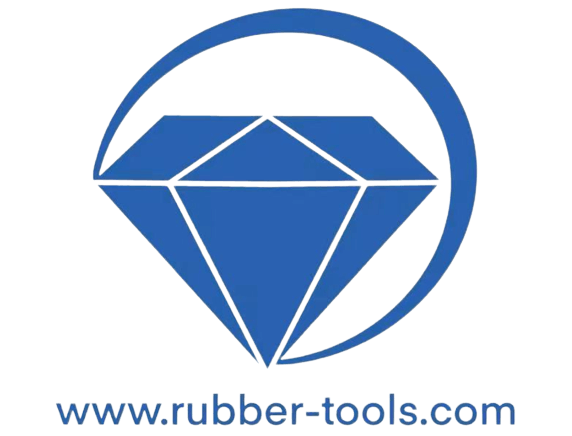Vamac rubber, a versatile and high-performance material, plays a crucial role in various industries, particularly in China’s rapidly evolving manufacturing landscape. As a key component in automotive, aerospace, and industrial applications, understanding Vamac rubber’s properties and benefits is essential for businesses aiming to enhance product quality and performance.
This guide delves into the unique characteristics of Vamac rubber, its production processes, and its applications across different sectors. Readers will gain insights into the advantages of using Vamac rubber, including its resistance to heat, chemicals, and aging, making it a preferred choice for many manufacturers.
Additionally, the guide will explore the current market trends and future prospects of Vamac rubber in China. By the end of this comprehensive overview, readers will be equipped with valuable knowledge to make informed decisions regarding the use of Vamac rubber in their projects and operations.
Vamac Rubber: A Comprehensive Guide
Vamac rubber, a high-performance elastomer, is renowned for its exceptional resistance to heat, chemicals, and aging. This makes it a popular choice across various industries, from automotive and aerospace to industrial and consumer goods. This guide delves into the properties, types, and applications of Vamac rubber, drawing on information from leading suppliers like Celanese (www.celanese.com), Tradechina (www.tradechina.com), and others.
Understanding Vamac Rubber’s Composition and Properties
Vamac is a trade name for ethylene acrylic elastomers (AEM), a type of synthetic rubber. Its primary components are ethylene and methyl acrylate, along with a curing monomer. This unique composition results in a material with a remarkable combination of properties. One key advantage is its superior resistance to high temperatures, often maintaining flexibility up to 175°C. Its resistance to oils, fuels, and various chemicals enhances its longevity in demanding environments. Companies like Apple Rubber (www.applerubber.com) highlight Vamac’s excellent gas impermeability, making it ideal for sealing applications.
Technical Features of Vamac Rubber
The following table compares the key technical attributes of Vamac rubber:
| Property | Typical Range/Value | Units |
|---|---|---|
| Temperature Range | -40°C to +175°C | °C |
| Tensile Strength | 7 to 20 MPa | MPa |
| Elongation at Break | 150% to 400% | % |
| Hardness (Shore A) | 55 to 80 | Shore A |
| Compression Set | Low | |
| Chemical Resistance | Excellent to many oils, fuels, and chemicals |
Different Types of Vamac Rubber
Several Vamac grades cater to specific application requirements. The differences are mainly in their performance characteristics, like temperature resistance and flexibility. Websites like FOB Rubber (www.fobrubber.store) detail these variations. The table below summarizes the key differences between some common types:
| Grade | Key Features | Typical Applications |
|---|---|---|
| Vamac G | Balanced properties, good chemical resistance | Automotive hoses, gaskets |
| Vamac GLS | Excellent low-temperature flexibility | Dynamic seals, boots for cold climates |
| Vamac D | Enhanced durability, high heat resistance | Powertrain seals, under-the-hood automotive components |
| Vamac VMX | Extreme conditions, robust mechanical properties | Demanding aerospace and industrial applications |
| Vamac Ultra HT | Ultra-high temperature resistance | Exhaust system components |
| Vamac DP | Easy processing, superior dynamic properties | Cable jackets, flexible couplings |
Applications of Vamac Rubber
Vamac rubber finds extensive use in various sectors. Its ability to withstand harsh conditions makes it suitable for critical components. Colmant Coated Fabrics (www.colmant-coated-fabrics.com) utilizes Vamac in coated fabrics for demanding applications. The versatility of Vamac is evident in its use in automotive seals and gaskets, industrial equipment, electrical and electronic components, consumer goods, and even aerospace applications.
Sourcing Vamac Rubber from China
TradeChina (www.tradechina.com) provides a platform for sourcing Vamac rubber from numerous Chinese manufacturers and suppliers. However, careful supplier selection is crucial. Consider factors like certifications (ISO 9001, RoHS), minimum order quantities (MOQs), and pricing. Thorough due diligence, including sample testing and contract negotiations, is essential for a smooth and successful import process.
Conclusion
Vamac rubber’s unique blend of properties makes it a high-performing material for demanding applications. Its versatility and robustness are evident in its widespread use across diverse industries. Careful consideration of application requirements, supplier selection, and quality control are key to leveraging the benefits of Vamac rubber.
FAQs
1. What are the main advantages of using Vamac rubber over other elastomers?
Vamac offers superior heat and chemical resistance compared to many other elastomers, along with excellent gas impermeability and good mechanical properties. This combination makes it ideal for demanding applications where other materials might fail.
2. How does the temperature range of Vamac rubber compare to other common elastomers?
Vamac’s temperature range generally surpasses that of many other elastomers, especially in high-temperature applications. Its flexibility and performance at elevated temperatures are key advantages.
3. What are some common applications of Vamac rubber in the automotive industry?
Vamac is frequently used in automotive seals and gaskets, particularly those exposed to high temperatures and aggressive fluids such as engine oil and transmission fluid. It is also found in hoses and other components.
4. What are the key factors to consider when selecting a Vamac rubber supplier?
When choosing a supplier, prioritize reputation, certifications (ISO 9001, RoHS), ability to provide technical data sheets, and the capacity to meet specific quality and quantity requirements. Sample testing is also crucial.
5. What are the typical costs associated with importing Vamac rubber from China?
Costs vary greatly depending on volume, grade, shipping method, and supplier. It’s essential to obtain quotes from multiple suppliers and factor in shipping, customs duties, and taxes to get an accurate estimate.
